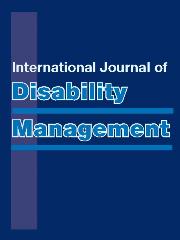Article contents
Disclosing a Diagnosis in the Workplace: Perspective of People With Multiple Sclerosis
Published online by Cambridge University Press: 17 February 2021
Abstract
Early withdrawal from the workforce is associated with a diagnosis of multiple sclerosis (MS), with employment retention rates also lower than in the general population. Despite legal requirements, equality in the workplace for people with MS has not been achieved. Disclosure of multiple sclerosis at work is essential for the implementation of accommodations enabling employment retention.
An interpretive descriptive study explored participants’ decision to disclose or not disclose their diagnosis of multiple sclerosis and the implications this had on work participation and working relationships. Semistructured interviews were used to collect data from 6 participants.
Three themes were identified, using a reflective approach to analysis, from the data: (a) Accommodations; (b) Workplace Relationships; and (c) Balancing Work and Home Life. Participants had mixed experiences of disclosing their diagnosis. Findings supported the implementation of workplace accommodations including physical, cognitive, and structural supports. Concealment of MS was associated with fear of workplace stigmatisation.
Disclosure is multidimensional and subjective. It is based on personal, systematic, and social factors. This study was limited by the small number of participants and not including stakeholders in the creation of the topic guide. The results are important for those involved in supporting people with multiple sclerosis to remain in the workplace.
Information
- Type
- Article
- Information
- Copyright
- © The Author(s), 2021. Published by Cambridge University Press
Footnotes
Social media: Twitter handle @OTNUIGalway and @sineadnieidhin
References
- 4
- Cited by

